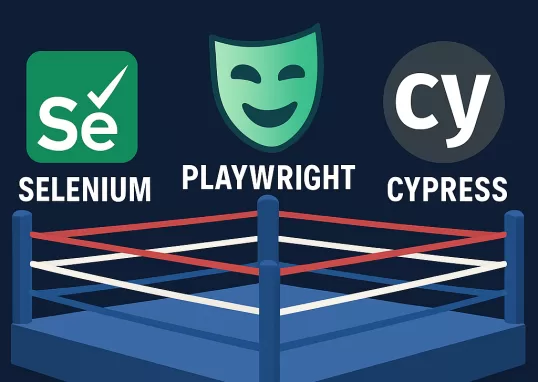
How many times have you opened an app, tapped a button, and… absolutely nothing happened? Or worse — the app crashed? That’s exactly the kind of experience quality assurance (QA) is here to prevent.
According to the Qualtrics Metrics Institute (2024), 94% of users say that a bad user experience leads them to stop using an app. That means product quality is directly tied to user retention.
The truth is, users have zero patience for buggy systems. If your app breaks, they close it, uninstall it, or move on. It’s that simple. And what many teams forget is: software quality isn’t something you only remember at the end — it starts from the very first commit.
That’s where QA comes in. And no, it’s not just “clicking around to see if something breaks.” QA is a strategic process — and it matters a lot more than most people think.
So, what exactly is QA?
Long story short, QA is a set of practices, processes, and tools designed to make sure software works well — reliably and consistently.
And let’s clear something up right away: Quality Assurance is not the same thing as software testing. QA is about making sure everyone involved in the project is aligned and satisfied with the product’s behavior and quality from the start. Testing, on the other hand, is just one part of that strategy — focused on catching and fixing bugs.
Also, manual testing isn’t the only way to ensure software quality. Automated testing is growing fast, and with good reason. According to DogQ.io (2024), over 60% of companies reported solid ROI from test automation.
But QA goes even further. It’s not just about catching bugs — it’s about preventing them before they reach the user. That mindset changes everything.
Why QA is essential (not optional)?

If your goal is to build with confidence, scale smoothly, and avoid chaos, QA isn’t just nice to have — it’s a must-have. Here’s why:
- It prevents financial and reputational damage: Bugs in production are expensive and hurt your brand.
- It improves the user experience: No one wants to deal with errors and glitches.
- It gives your team peace of mind: A solid QA process means developers can move faster with less rework.
- It speeds up time-to-market: Products tested intelligently get shipped sooner.
- It saves time (and money): Fixing issues early is always cheaper than doing damage control later.
The real-world challenges of QA today
Let’s be honest: QA sounds great on paper — but in practice, it’s not always easy. Teams face some big challenges:
- Development cycles are getting shorter and faster.
- Codebases grow quickly, and testing often lags behind.
- Teams are overwhelmed with repetitive, manual testing tasks.
- Test coverage becomes harder to maintain and scale.
That’s when bugs start slipping through the cracks — and where technology can step in to help.
How TestBooster.ai helps

TestBooster.ai was created specifically to solve these common problems found in traditional automated testing.
Due to its integration with Artificial Intelligence (AI), it automates and optimizes test creation, but unlike other tools, it doesn’t stop there! In addition to all tests being created in natural language, it also runs them automatically. This means less code and, more importantly, that you only need to understand the product being tested.
We’re not just talking about saving time — we’re talking about smarter testing that keeps up with development and helps the team deliver more safely.
It’s the ideal tool for those who want to scale without compromising quality. For devs, QA leads, and squads that need to go beyond traditional testing.
The future of QA
Here’s the thing: QA has never been the job of one person. It needs to be part of the team’s DNA — built into the development process from day one. This approach is known as shift-left testing. And in today’s fast-paced environment, automation isn’t a luxury — it’s a necessity.
Tools like TestBooster.ai make it easier to build a real culture of quality, with constantly updated tests, intelligent automation, and AI backing every step.
Teams that invest in quality from the start avoid chaos, ship better products, and work more efficiently. Simple as that.
If your team is ready to move past slow, manual testing and build with confidence, TestBooster.ai is your best ally.





